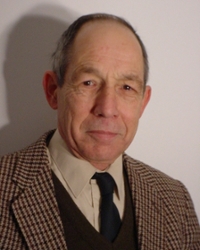
Arnout van Genderen
Associate Professor / Guest
- Name
- Dr. A.M. van Genderen
- Telephone
- +31 71 527 5863
- genderen@strw.leidenuniv.nl
- ORCID iD
- 0000-0002-7625-6366
Arnout van Genderen started his astronomical career at the Leiden Observatory as a 'candidate assistent' in 1961, and was fascinated by the study of variable stars by means of multi-colour photometry. A novelty was that he found proof that the light variations of magnetic stars are periodic and in phase with the magnetic variations. This was based on the photometry done with the 45-cm Zunderman reflector. After his Master of Science he was sent to the Leiden Southern Station Hartebeespoortdam, Broederstroom, Transvaal (now called Gauteng), South Africa, in 1966 for half a year. The main telescope was the 90-cm Lightcollector equipped with the Walraven 5-colour photometer. For the first time it was shown that Cepheids in the Small Magellanic Cloud showed a strong ultraviolet-excess confirming that they are metal poor. The subject of his PhD in 1969 concerned Cepheids in the Small Magellanic Cloud. The dust-to-gas ratio of its interstellar medium appeared to be about five times smaller than in our Galaxy: obviously the cause of their low metal content. He was sent out to the Leiden Southern Station early 1971 once more, now for eight years until 1978. The observations were made for colleagues and himself. The main subject of research concerned many types of variable stars, which were the basis for a number of theses and many papers. Additionally, he trained numerous students sent out by the Dutch astronomical institutes, to get used to a telescope and how to deal with the raw data and the calibration processes. As an amateur-archeologist he discovered on the grounds of the Oservatory the remains of an Early Iron Age village, which turned out te be the oldest and the best preserved Early Iron Age village of Africa South of the Sahara. Carbon dating yielded the years 300-600. This meant that Bantu-language speaking people migrated to South-Africa (their ancestors came from Cameroon and the Congo-Basin), 1000 years earlier than historians believed. Back at the Leiden Observatory he decided to stop observing. Roughly 20 000 hours of working at night were enough, apart from a few weeks at the ESO, Chile, to use the Lightcollector again, which just was moved from South-Africa to the ESO. He was appointed 'Universitair Hoofddocent' equivalent to Associate Professor, in the nineties. He retired in 2001, but is still doing research in the field of variable stars.
Associate Professor / Guest
- Science
- Sterrewacht
- Sterrewacht

